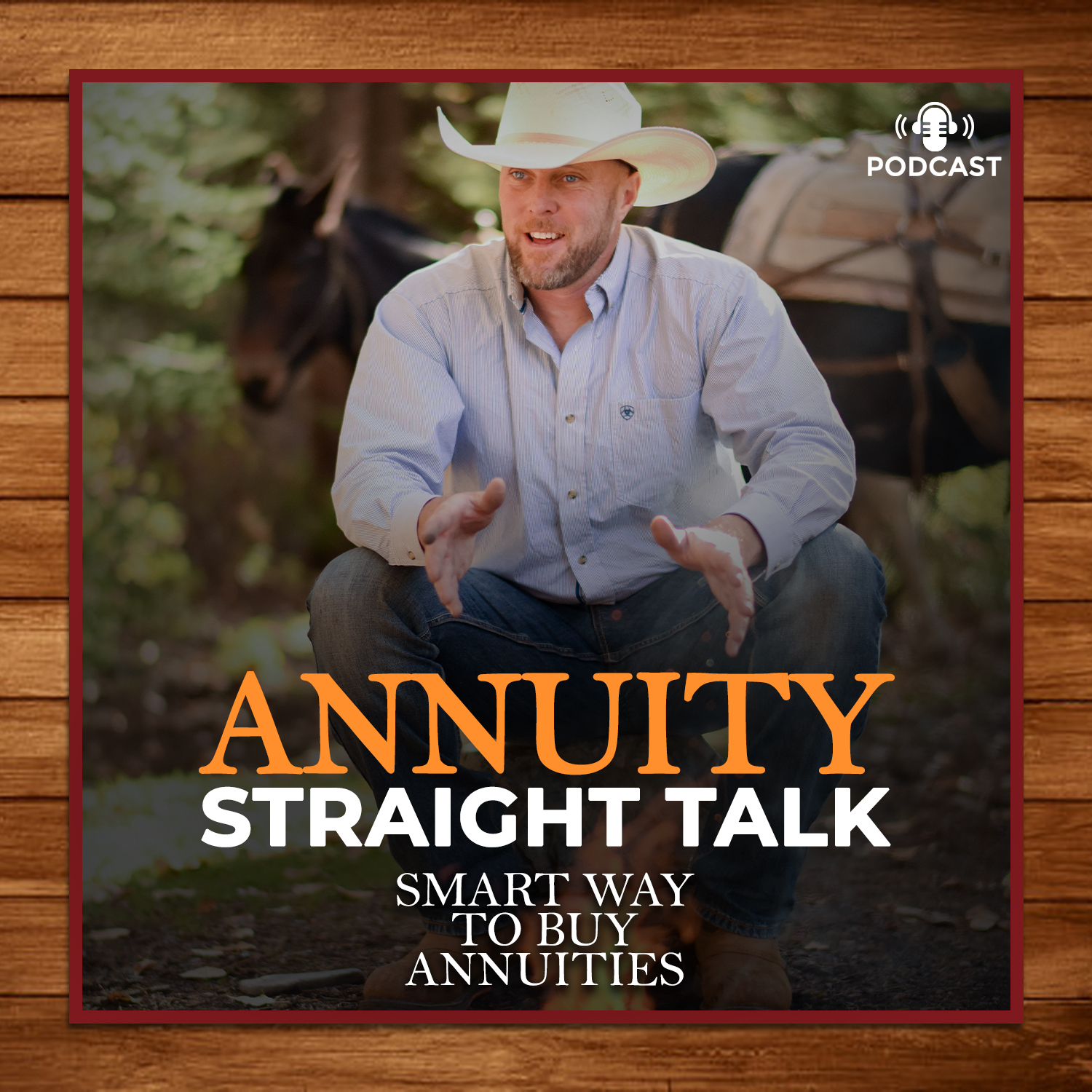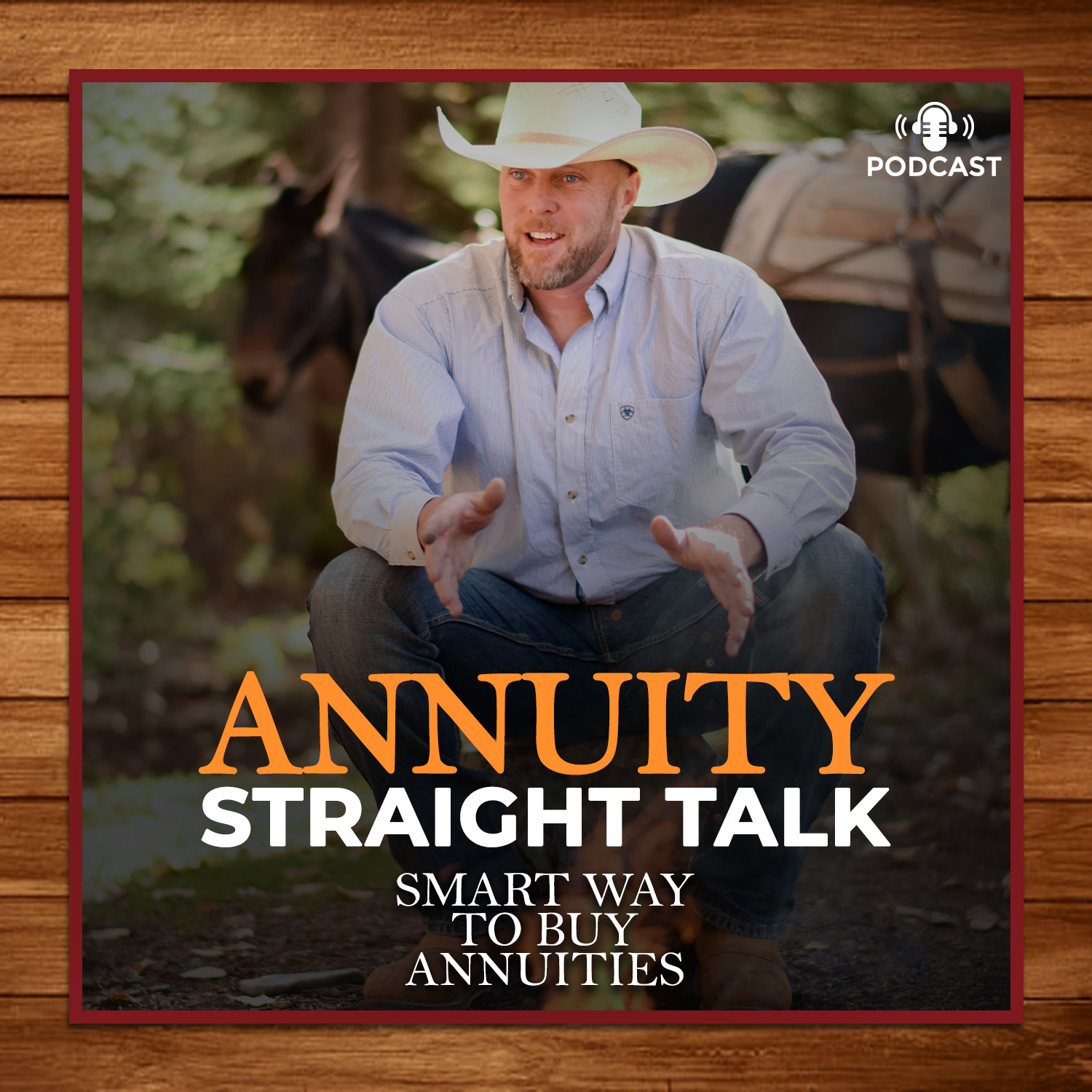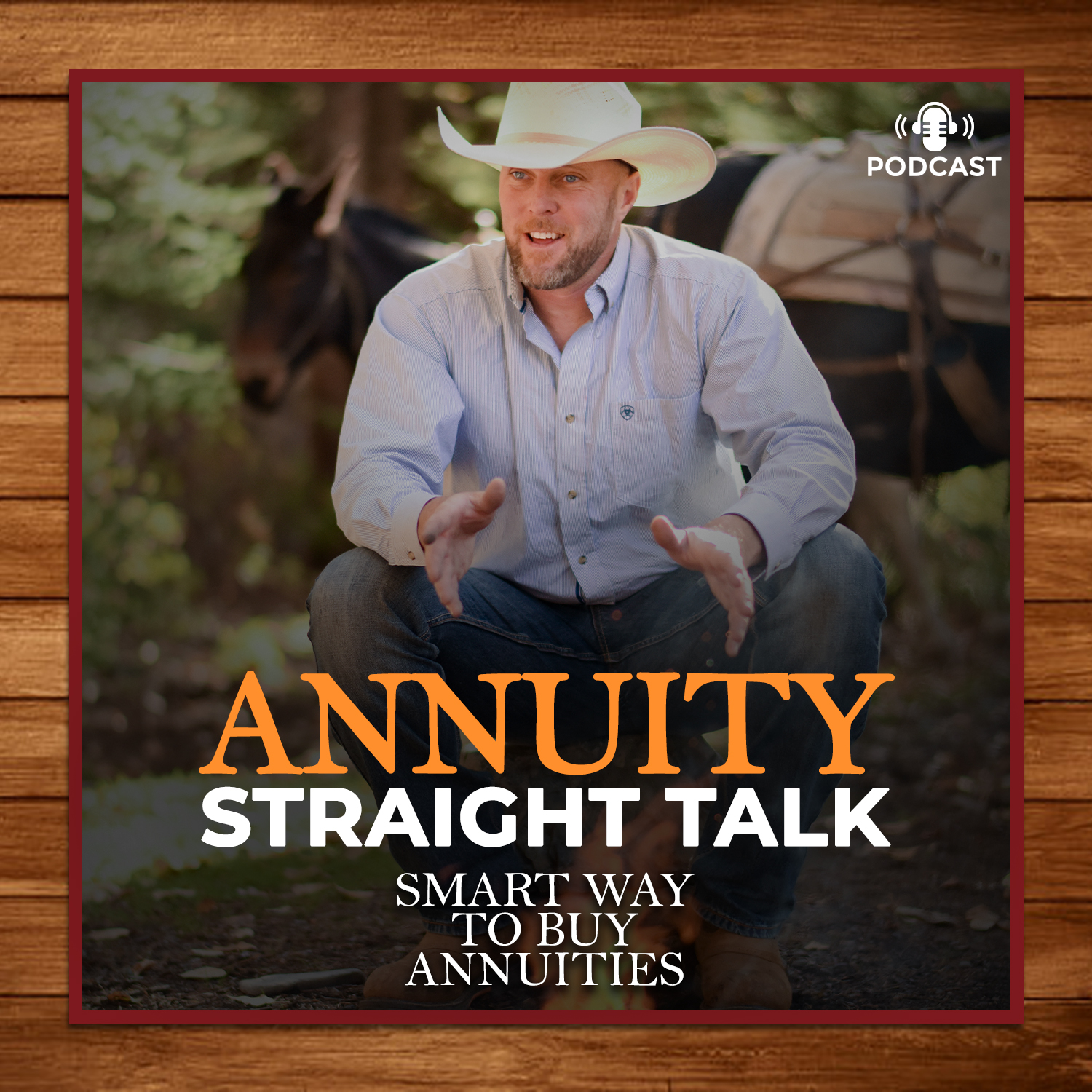Episode Transcript
[00:00:00] Hello and welcome to the Annuity Straight Talk podcast, episode number 144.
[00:00:06] My name is Brian Anderson, founder and creator of annuitystraighttalk.com. back with another episode. Please like subscribe or comment on any of your favorite podcast platforms or on YouTube. Today we're going to talk about annuity ladders, cd and bond alternatives. The idea of safe asset ladders is not new. I get ideas from clients and prospects, people I have meetings with. This is a new client. Awesome guy. Curtis. A lot of other people have had the topic on different videos. I watched them just to see if I could probably take a little bit different angle than everybody else does and we'll see. But that's the power of customer requests. You guys let me know what you want to see. If it's valuable information I think somebody else can use, I will put it out here, so try to give you a deeper perspective on this. So laddering fixed investment is an old concept. It's been done with bonds and cds for decades. Idea really comes down to diversification and management of interest rate. Risk is really what it's all about. I like being able to like, oh, I have a bond ladder, I have a cd ladder, I have this, I have that. It's kind of like the old bucket planning. Well, I take a bucket planning approach. It's just one of those terms. It's kind of catchy. People use it. So if you know rates are going to drop, then it's best to go long on interest rates. If you think rates will be lower, you want a longer term lock in on the rate. If rates are going to rise, then you want to stick to short stuff so you can reposition your assets in a higher interest rate environment. You're not stuck with them for as long a term. So a good ladder, no matter what asset you use, is going to have. Some of them are positioned well and some of them are going to be positioned to your disadvantage. And so it's all going to average out. Of course, if we knew what you had to do or what was the proper thing to do, then you just go all long or all short, but we don't. So that's why you spread the risks.
[00:01:54] Cds are typically better for the shortest term holdings. Less than five years. Bond ladders. I've seen a lot of people, and this is, you know, the people say, I don't want to lock up into annuity. I've seen bond ladders stretch to 1516 years and sometimes longer. Annuities are really best in that middle ground. I'll talk about that a little bit later. Why would you get into a bond ladder for 15 years if you don't want to lock up into an annuity? Well, it goes through a lot of different ideas, but annuities are the in between deal. There's lots of other benefits for using annuities over cds and bonds. I'm going to go into detail in each one of those, but really it's going to come down to four things. It's the yield you can expect, taxes you might pay, the overall safety of the investment, and the liquidity that each provides. Everyone wants to know how much money they can make. Cds, bonds and annuities all have fairly similar yields with matching maturities and depending on the credit quality of the backing institution. The only time you're going to see a major difference is with bonds with lower rated investments like high yield bonds, or you can get callable bonds. So people, some people say, well, I'm getting, I've got an 8% bond. Yeah, but it's callable. It's a five year bond. They're gonna call it in two years and then you don't get your 8% anymore. So high bond rates come with more risk. It's either callable or it's a substandard credit rating. If, you know, if the company wants, if, hey, they can refinance the debt at a cheaper rate, they're going to call that bond. So it's more of a short term play for the insurance company. And then obviously they're not going to call it if rates rise a ton and then you're kind of stuck. So, I don't know, pick your poison, I guess. So. The long and short of it is the yields are all about the same. Annuities in a lot of cases are a little bit higher than cds, maybe a little higher than bonds. Understand the insurance companies buying in large blocks, they get better deals than you can by just going and, you know, putting some money into a bond ladder with 20 different holdings in it. So taxes are the next question. Pre tax money, like an IRA or 401K, you can pick based on all the other factors. It doesn't matter because there's the same amount of taxable. It's just whenever, you know, interest payments go into the IRA, you don't pay taxes until you take an IRA withdrawal.
[00:04:12] If it's after tax monies, then cd growth and bond interest will be taxes, ordinary income each year. Annuities get the edge there because you can defer those taxes and have some control over when and how you pay those. But you do have to be careful when you take withdrawals, the interest has to come first. So if you let that thing sit there for four, five or six years, you got a substantial amount of accumulated interest, and you've got a long ways of taxable withdrawals to pull out first before you get the tax free basis out. So that's got to be considered. I know some people who are intentionally going into that situation thinking their kids will just take the money and can deal with it down the road. That goes into inherited annuities and all that stuff. Done a podcast on that way back at the beginning, probably episode ten or twelve. It's there, but let me know if you want me to redo that. It could be updated a little bit.
[00:05:02] So asset preservation or safety is the primary purpose of any of these. Providing stability to a portfolio, reducing risk, avoiding risk, whatever it is.
[00:05:15] In terms of safety, annuities come out on top by a wide margin. They're essentially a diversified bond portfolio with insurance company reserves to act as insurance. Bond ladders need to be extremely well diversified, because although safe bonds do fail from time to time as a whole, and I looked this up and you can just google it, 1.5% of corporate bonds fail annually.
[00:05:39] Investment grade bonds are much less likely. That's about a 10th of a percent. Sub investment grade or high yield bonds are about four to 5%. Now, a small percentage is not going to crush a portfolio.
[00:05:53] But think about it in terms of annuities. I can't find any case of anybody losing money with an annuity. If it was even a 10th of a percent chance, nobody would do it. It doesn't happen.
[00:06:04] That's why if you do build a substantial bond ladder, you've got, you know, you think it's a million bucks, you have no more than probably 20 or $30,000 at any one thing, because if that one goes down or gets written down, half, you know, half price, then that's a little hit. Nobody likes that. So yeah, the safety of annuities cannot be argued. The cds do have FDIC insurance, and that's not insured. There's not like a pool of money sitting there. Anybody who complains about the national debt and excess government spending shouldn't get all warm and fuzzy about FDIC insurance, because all it is, it's an inflationary tool. It's the ability of Congress to stroke a pen and create money to cover that debt.
[00:06:45] So leaning on that is creating an inflationary environment, and you are being subsidized by the federal government. So if you think you're free, you think you're conservative, and you don't like excess government spending, then don't lean on those companies. Do some real research. Get something really safe, like an annuity and the insurance companies that actually have money. So liquidity may not be an issue for some, but most people are concerned with it. In a lot of cases, it is necessary for retirement income planning or even require minimum distributions. Cds don't have any liquidity with the individual cds, so you have to, you have to build a ladder. If you're trying to do consistent distributions, you get one or two or three or four if you're doing anything. As far as distributions, income planning, those types of things, bonds pay regular interest, but if more liquidity is needed, then you have to sell the bond. Changes in interest rates could increase or decrease the market value of that bond, so you carry some risk in doing so. That is essentially interest rate risk, how the value of the asset changes based on changes in interest rates. Middle ground for all of this is an annuity. It's quite likely that all distributions could be met with no risk using a 10% free withdrawal of a fixed annuity contract or a mygA or an index annuity. If yield is about the same in all three plus annuities are safer, have more liquidity, and come with potential tax advantages. For those of you with after tax money, seems like a pretty easy choice, right? All types of safe asset ladders can be used to either accumulate money or distribute income. I built annuity ladders for both reasons, but most common is to use an annuity ladder to bridge an early retirement income gap. For someone who wants to maybe delay Social Security or maybe a deferred compensation package and delayed Social Security. If you got deferred comp, and I know several people that do this, deferred comp covers them for three or four years. Now they're 66. Might as well wait another four years. Put some mygas, put some cds, put some bonds that will mature and cover that income gap. That's typically how it's done, but you can use them for the long run as well. In several cases, I've recommended a combination of these things because each has an optimal timeframe and you get to diversify as well. Diversification of longer term maturities can blend annuities with bonds to bring a good balance of safety and yield. Another way annuities have been used is to ladder income stream. If you have three or four income annuities, one can be turned on now and the others in gradual succession, staggered intervals to create increasing income over time. I'm not a huge fan of that, but people talk about it. They say, oh, I have my inflation protection, because now I can just increase income every time I turn on one of these annuities and the income stream. So it's not true inflation protection because it costs a lot. You have to set aside a good chunk of your portfolio to make that happen. So if you actually run an internal rate of return, it's not true inflation protection. But you will see people talking about laddered income. I don't have a problem with anybody that does that because a healthy retirement means you have the luxury of buying products that make you happy if that's what you want to do. Sometimes it's not just about yield.
[00:09:57] So asset ladders, again, are meant to protect money and hedge interest rate risk. If rates rise, short term assets can be repositioned with higher interest rates. If rates drop, your long term holdings will have more value. In just about every case I've seen, this is exactly the goal of those who pursue it. Have money becoming liquid so you can take advantage of potential improvements in yield. It can be done with fixed annuities, mygas, or fixed index annuities. And there are a lot of people who do it, and it's just another little thing in the world of annuities where I specialize. So get on my calendar if you'd like to address this in terms of your retirement plan. I want to thank you guys for joining me again. Please, like, subscribe or comment on any of your favorite podcast platforms or on YouTube. Share it with your friends. A lot of people you know, could probably benefit from this information. I've heard from a lot of people said, hey, I sent this to my friend. They really like it. Okay, great. There's no obligation whatsoever if you want to make a call. Top right corner of any page on annuitystraighttalk.com. this has been episode 144, Annuity Ladders. Thank you for joining me. I'll see you next week for episode 145. Okay, have a great day. Bye.


